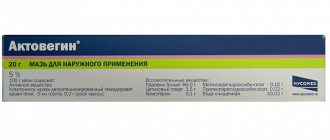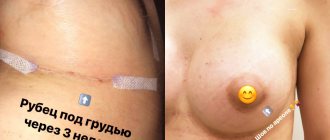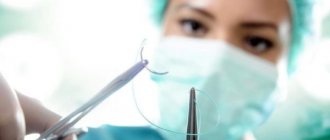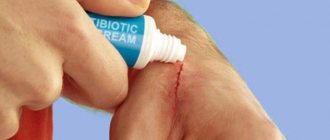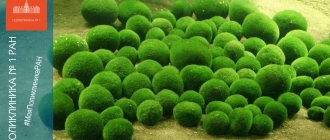One of the important aspects of the postoperative period is proper care of sutures. It will not be a revelation to anyone that it is always easier to prevent than to deal with the consequences. Stitches entail the likelihood of scars and scars, and if you start using something from the rich arsenal of ointments, gels or creams in a timely manner, you can avoid cosmetic defects. Our article will demonstrate the rating of the best ointments for healing sutures after surgery and will help you choose the most optimal option for the necessary drug in 2022
CLASSIFICATION
There are different types of sutures that are placed at the end or during operations.
Depending on the nature of the origin and size of the surgical field, there are:
- bloodless - made with a special adhesive plaster without the use of suture material.
- bloody - applied using special tools - suture threads, tweezers, needles and Hegar needle holder.
Bloody stitches are divided into:
- simple nodal - needle puncture - triangular, due to its shape it holds the material in place;
- intradermal continuous - the most reliable, since after its removal there is no cosmetic defect left;
- mattress - applied during abdominal operations and extensive damage to organ complexes;
- purse string - used in plastic surgery and gastric resection;
- entwining - resembles circular movements, used for suturing blood vessels and perforated organs (stomach, bladder, intestines).
Depending on the instrumentation used to apply sutures, there are:
- manual suture - applied using a needle, needle holder, tweezers and suture material;
- mechanical suture - which is applied with a special device resembling a stapler.
Depending on the type of tissue damage, the suture can be applied in one or several rows.
Seams are also divided into:
- submersible – applied inside the abdominal cavity in organs and tissues;
- removable - applied to the skin, head tissue and other integumentary areas).
After the surgical procedure to close the wound, a healing period begins. It depends on the location of the postoperative wound, its size, the patient’s condition, age, and restrictions on physical activity.
The healing period is influenced by its sterility and the materials used to process it after surgery.
A specialist will help
Providing quality medical care is the key to preserving human life. Since the occurrence of suture infiltration occurs after surgery, maximum efforts are required from any specialist to prevent its development. It is required to be especially attentive during the rehabilitation period, and it is also necessary to be aware of the individual characteristics of each patient’s body. Since some patients who have strong immunity are less prone to complications.
STAGES OF SUMMER HEALING AFTER OPERATION
Healing of sutures after surgery is carried out in 3 stages.
At the first stage, the synthesis of connective tissue begins to increase from collagen fibers formed by fibroblasts.
At the second stage, epithelial cells change their localization, moving from the periphery to the center to the site of damage. These cells provide a barrier function, preventing microbes from entering the wound surface. The second stage ends by 4-6 days, if everything proceeds without complications.
At the third stage, complete closure of the wound defect occurs.
Important! Wounds should be treated only after cleaning the hands first with water and soap, then with alcohol. Tools must be disinfected before use.
The effectiveness of ointments for postoperative sutures
The rate of healing of postoperative sutures is influenced by a number of factors:
- Age
. In younger patients, the healing process occurs at a faster pace. - Weight
. The presence of excess subcutaneous fat contributes to poor circulation, which leads to prolonged healing. - Diet
. Unbalanced nutrition and lack of fluid reduces the rate of tissue regeneration. - Immunity
. Disturbances in the functioning of the immune system negatively affect the healing process of postoperative wounds. - Level of blood circulation at the wound site
. Incisions located in areas with large concentrations of blood vessels heal faster. - Oxygen supply
. Tissue ischemia resulting from strong tightening of sutures, hypoxemia, low blood pressure or vascular insufficiency impairs the supply of oxygen to tissues and, as a result, prevents rapid wound healing. - Presence of chronic diseases
. Diseases of the endocrine system and diabetes mellitus have the worst effect on the healing of sutures and often contribute to the occurrence of complications. - Suppuration or secondary infection
. These problems lead to deterioration of the wound and inhibit the healing process. - Type of scar
. Normotrophic, atrophic, hypertrophic and keloid scars are distinguished. The scars of the first two groups heal the fastest.
With regular treatment, the healing time depends on the location of the wound:
- on the face – 3–5 days;
- on the stomach – 7–13 days;
- on the back – 10–20 days;
- on arms and legs – from 6 days.
The use of anti-inflammatory drugs in the first days after surgery, the use of steroid and corticosteroid drugs, chemotherapy or X-ray irradiation also significantly slow down the healing of sutures.
HOW TO TREAT SEAMS AT HOME?
Postoperative sutures are treated with special antiseptic preparations. Every day in a hospital or at home, until the stitches have been removed, use:
- solution of potassium permanganate (the correct dosage and method of dilution should be explained by the doctor in order to prevent the development of swelling and burns);
- iodine solution (use in small quantities, as it can cause dry skin);
- brilliant green solution;
- hydrogen peroxide solution (can cause burning and foaming);
- anti-inflammatory agents of paste or gel consistency.
HOW TO ACCELERATE SUCH HEALING AFTER SURGERY?
To quickly heal the postoperative suture, it is necessary to use wound healing ointments.
These include levomekol, ichthyol ointment, solcoseryl, bepanthen and others.
Levomekol has antibacterial properties and causes accelerated regenerative ability of cellular elements. The ointment is applied to a cotton swab or ball and the seam is treated. Duration of use is 5-7 days.
Use is contraindicated for dermatological diseases (psoriasis, various skin rashes), and for intolerance to the main component – methyluracil.
Ichthyol ointment has anti-inflammatory and antiseptic properties. It must be applied in a thin layer to the damaged area. Apply a sterile bandage and bandage on top.
Solcoseryl is used to activate fibroblasts. It improves metabolic processes in connective tissue elements. Apply a thin layer to the disinfected wound surface.
Do not use if you are hypersensitive to para-aminobenzoic acid.
26.11.2021
Suture after cesarean section: healing process, care and recovery features
In modern obstetrics, caesarean section is a frequently performed operation. To remove the child, a transverse incision 10-15 cm long is made directly above the pubis, after which a neat cosmetic suture is applied. However, such a seam also requires some care.
After the anesthesia wears off, the mother feels pain in the lower abdomen, which requires additional pain relief in the hospital. Painful sensations may persist during the first weeks after surgery; as a rule, they do not require additional analgesics. “Silent” nagging pain in the suture area can be felt for up to a year.
Features of suture healing after a CS, as after any operation, are: compaction of the suture and the area around it, the release of a small amount of ichor and clear liquid from the incision - all this is normal. This is a natural healing process. The seam becomes soft after a year. Reasons to consult a doctor may include: discharge of pus, blood clots from the incision, localized swelling in the scar area, its increase with increased pain. Immediately after a cesarean section, numbness occurs in the lower abdomen. This occurs due to the intersection of small nerve fibers during the cut; sensitivity will occur after a few months, when the nerve fibers are restored again. 2-3 weeks after surgery you may experience itching in the suture area. Tissue healing is always accompanied by such symptoms. The process is long - the seam can itch for up to a year.
The main fear among women in labor is the possibility of the seam coming apart. The latter is rare. This complication can be determined by the following symptoms: the incision is very painful and swollen, redness is observed in this area, pus with blood and an unpleasant odor is released from the wound, and a rise in temperature is noted. In such a situation, you must immediately consult a doctor!
Normal healing process
Thanks to modern materials and well-established techniques for performing a cesarean section, the healing of the suture occurs quickly. The mother is discharged already on the 6-8th day, as a rule, after the stitches are removed, and self-absorbing ones “disappear” on their own after 1-2 months. While the woman is in the maternity hospital, medical staff monitors the healing of the suture, sterile dressings are changed daily, and the scar is regularly treated with antiseptics. After discharge, the mother will have to treat the suture; the rules are the same as in the hospital - daily change of the bandage, regular treatment of the wound with an antiseptic. After discharge from the maternity hospital, doctors prescribe follow-up examinations at the antenatal consultation stage.
It is better to treat the seam after a shower. Water procedures (just not taking a bath!) are allowed on the 8-10th day after surgery, because wounds heal faster on clean skin. Worried mothers don’t shower for weeks; this does more harm than good—failure to maintain hygiene can trigger the development of inflammation. A postoperative wound, as a rule, is treated first with peroxide and then with brilliant green; the doctor may prescribe other means: antibacterial ointments and solutions, powders, chlorhexidine, etc. After 2-3 weeks, if wound healing proceeds normally, treatment can be stopped. But it is necessary to continue monitoring the condition of the skin in this area. The seam is completely healed after 1-2 months.
Lifestyle tips for a better healing process after CS:
- do not lift weights exceeding 3-4 kg for two months,
- do not take hot baths for the first 3-6 months,
- Avoid exposure to high and low temperatures on the skin: saunas, tanning, severe frost,
- enhanced fitness, stretching exercises,
- wear underwear made from natural fabric for six months, it is important that the edges of the panties do not touch the seam,
- It is not allowed to scratch the wound until it has completely healed,
Women are often concerned about the appearance of the skin in the area of the formed scar after cesarean section. It will not be possible to completely get rid of the scar, but proper care and treatment, as well as special cream-gels to improve the appearance of the scar, will help make it less noticeable. They can be used only after the wound has completely healed, and for at least 2 months. These products help to significantly improve the appearance of both fresh and old scars. Sometimes the suture can heal with the formation of coarse hypertrophied scar tissue; the cause of this complication is usually the individual peculiarity of wound healing. Plastic surgery can help remove this cosmetic defect; alternatives include deep peeling, laser resurfacing or microdermabrasion.
Scar correction using cosmetic methods.
It is important to know that a scar also remains on the uterus after a cesarean section. Ultrasound helps monitor the healing of the suture on the uterus. It is carried out when a woman is discharged from the maternity hospital, then after 2 months; the adequacy of suture healing can be finally judged only after 6 months by ultrasound.
A woman who has had a caesarean section is advised to plan her next pregnancy no sooner than 2 years later. This period is considered optimal for stabilizing the uterine scar.
Regular visits to an obstetrician-gynecologist will reduce the risks of complications during scar healing; following all the doctor’s recommendations will help you properly prepare for the next pregnancy, which will inevitably affect its favorable course!
Obstetrician-gynecologist at the antenatal clinic of the State Healthcare Institution “City Clinic No. 4 of Grodno” Skvortsova O. O.
HOW TO REMOVE SEAMS?
At home, sutures after abdominal operations are prohibited from being removed. Sutures can be removed when suturing skin defects on the upper and lower extremities.
Rules and techniques for removing postoperative sutures
- It is necessary to prepare sterile instruments and disinfect your hands up to the elbow. Provide access to the seam.
- Using an antiseptic, treat the suture area with a cotton swab.
- Then, taking tweezers in your hand, slightly lift the first knot.
- Taking the scissors in your hand, cut the suture thread.
- Do this with all nodes.
- Make sure that all suture material is removed.
- Treat the area of the removed suture with an antiseptic solution.
- Apply an aseptic bandage.
Why do a dressing?
The procedure is multidisciplinary; it simultaneously pursues several goals. All of them will be discussed in more detail below:
- Protection. Wounds need to be protected from dirt and dust. Only in conditions as close to sterile as possible will they heal truly quickly.
- Disinfection. Every day (and sometimes several times a day), changing the dressings in the dressing rooms, the medical staff treats the wound with antiseptic compounds, which minimizes the occurrence of infections, suppuration and other pathological processes
- Fixation of medications. Ointments and gels, due to their consistency, cannot adhere to the surface of the wound on their own, so they urgently need reliable fixation. This is ensured by bandaging
Specialists in dressing rooms solve one of the above problems or all at once. This process is an integral part of the postoperative period, in cases where surgical intervention has taken place.
HOW TO TREAT THE SITE OF THE SEAMS AFTER ITS REMOVAL?
After removal, the surgical wound site can be treated with a solution of furacillin, brilliant green or hydrogen peroxide. The course of treatment is 4-7 days, until the wound surface completely disappears.
Sutures after surgery provide connection and fusion of tissues of various origins. It is necessary to properly treat the suture site in order to prevent the penetration of infectious agents. Antiseptic healing ointments will help ensure rapid healing. After healing, the suture should only be removed in the surgical department. It is not recommended to relieve shock yourself. This can lead to the development of inflammation, suppuration, swelling, etc.
Medical treatment of scars
There are also medical treatments that can make the scar look better and cause less discomfort. Examples of such treatments include:
- steroid injections (shots);
- dermabrasion (surgical scraping of the upper layers of skin);
- laser treatment;
- operation.
These treatments may be used after the scar has healed sufficiently on its own.
Your dermatologist will tell you whether any of them are right for you. to come back to the beginning


